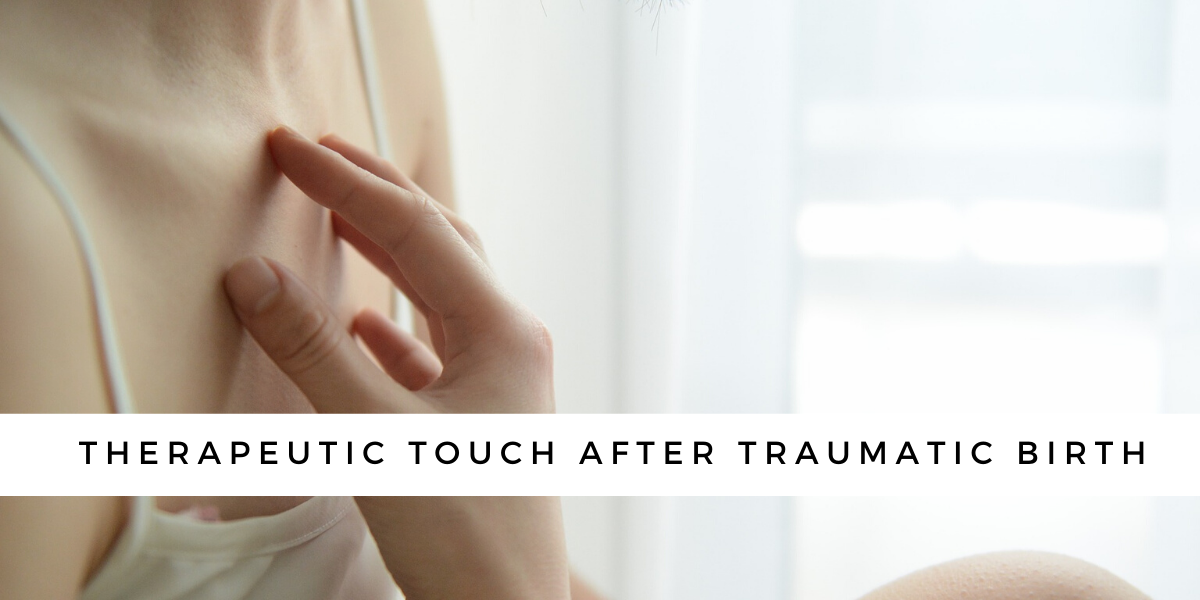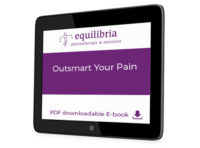Traumatic birth can affect you both mentally and physically.
The physical aspects of traumatic birth are varied, and include painful stitches, perineal swelling, wound infection, and loss of bladder or bowel control or prolapse of your internal organs (both of which can be immediate, or not show up until later). Later, when you try to have sex and are shocked by the pain, you discover another aspect of physical birth trauma. With those sensitive areas, touch is the last thing you feel like in the early days. If painful sex ensues, it’s the last thing you feel like then, as well. It’s hard to imagine any form of touch that could be a good thing. But that’s where therapeutic touch comes in.
Therapeutic touch is the kind of touch designed to help and heal you. It’s touch with a higher purpose.
It might actually feel good; you might be able to feel that it’s therapeutic. Sometimes, though, it doesn’t feel “good” as such, but you will know that it’s “good for you”. It will get you where you want to be: relaxed, able to focus on what matters most, able to love and enjoy your body again, able to enjoy sex (even if that seems a way down the track). Therapeutic touch can be provided and taught to you by a physiotherapist who works a lot with pain, so that you or a loved one can provide it to yourself.
When therapeutic touch is by your physiotherapist, it’s called manual therapy. But postpartum – especially after birth trauma – this is not of the gung-ho, dig-deep, bone-crunching variety (and some people never like that stuff!)
Postpartum, effective manual therapy is, above all things, SENSITIVE.
Manual therapy helps you most postpartum when it is provided in a way that is very sensitive to your experience. Most importantly, your physiotherapist should be very concerned about how it is making you feel – especially if it is putting you too far out of your comfort zone. Going out of your comfort zone a little bit is ok, as long as you feel safe.
Effective manual therapy or therapeutic touch postpartum falls into two categories: “feels good, and safe” and “feels ok, and feels safe”.
Therapeutic Touch that “feels good, and feels safe”
This one is easy to understand! It’s like a lovely scalp massage, or a shoulder rub, or a foot rub. It can be different for everyone, and it can change when you’ve been through trauma. For example, you might have enjoyed a deep back massage before, but now you may like a slow, lighter stroke. Regardless, you’ll know this type because you go “aaaaahhh” when it starts, it feels great, and you are disappointed when it finishes. After a traumatic birth, I recommend you seek out this out from family members as much as possible – it often includes hugs! When coming to the physio, we will often do some comforting manual therapy for part of the session to soothe your nervous system.
Therapeutic Touch that “feels ok, and feels safe”
This type is just as important to your recovery, if not more. It doesn’t feel great – it may even feel slightly uncomfortable – but never enough to make you feel a “fight or flight” feeling or to tense up or grimace. If your manual therapy does feel like this, you need to speak up as “freaking out” your nervous system is not therapeutic! However, if you continue to avoid things that feel a bit uncomfortable, your nervous system may stay sensitive and not adapt well to getting back to things. This is one of the key problems in chronic pain – pain that persists longer than the usual healing time. Trauma makes your nervous system more sensitive as it tries to protect you from what it has “learnt” is a dangerous world. This sensitive nervous system needs retraining – convincing and reassuring that it is strong enough to recover and deal with the world. To do this, we need to provide therapeutic touch in very gradual steps. This means it might not feel fabulous when we are providing the manual therapy – that is, you wouldn’t seek it out for fun – but it’s healing to the body. This can be a fine line, but I usually ask my patients what discomfort level they are at and aim for 4 out of 10 or below. This discomfort can be physical, but might just as easily be mental – a feeling of “I don’t love that, I feel a bit sensitive there, I feel like I want to protect that”. But as you breathe through it, you will feel it ease, and you will know that you are safe and that you are recovering.
This type of manual therapy might include connective tissue massage (which I also teach patients), or sustained pressures or stretches, regular massage, or myofascial release – in fact anything that makes you aware of the area and more trusting of the sensations over time. This can be directed at any affected body part, but especially the lower abdomen after a Caesarean section and the vulva/vagina after a vaginal delivery. For more on this specifically related to Caesareans, see my post Adhesions: why you need to play with your Caesarean scar.
If you feel like your pain has persisted too long after a vaginal delivery, please book an appointment, and in the meantime, please start your recovery by reading my e-book Outsmart Your Pain, which has a step-by-step program for recovering normal, healthy sensation without discomfort at the vulva.


